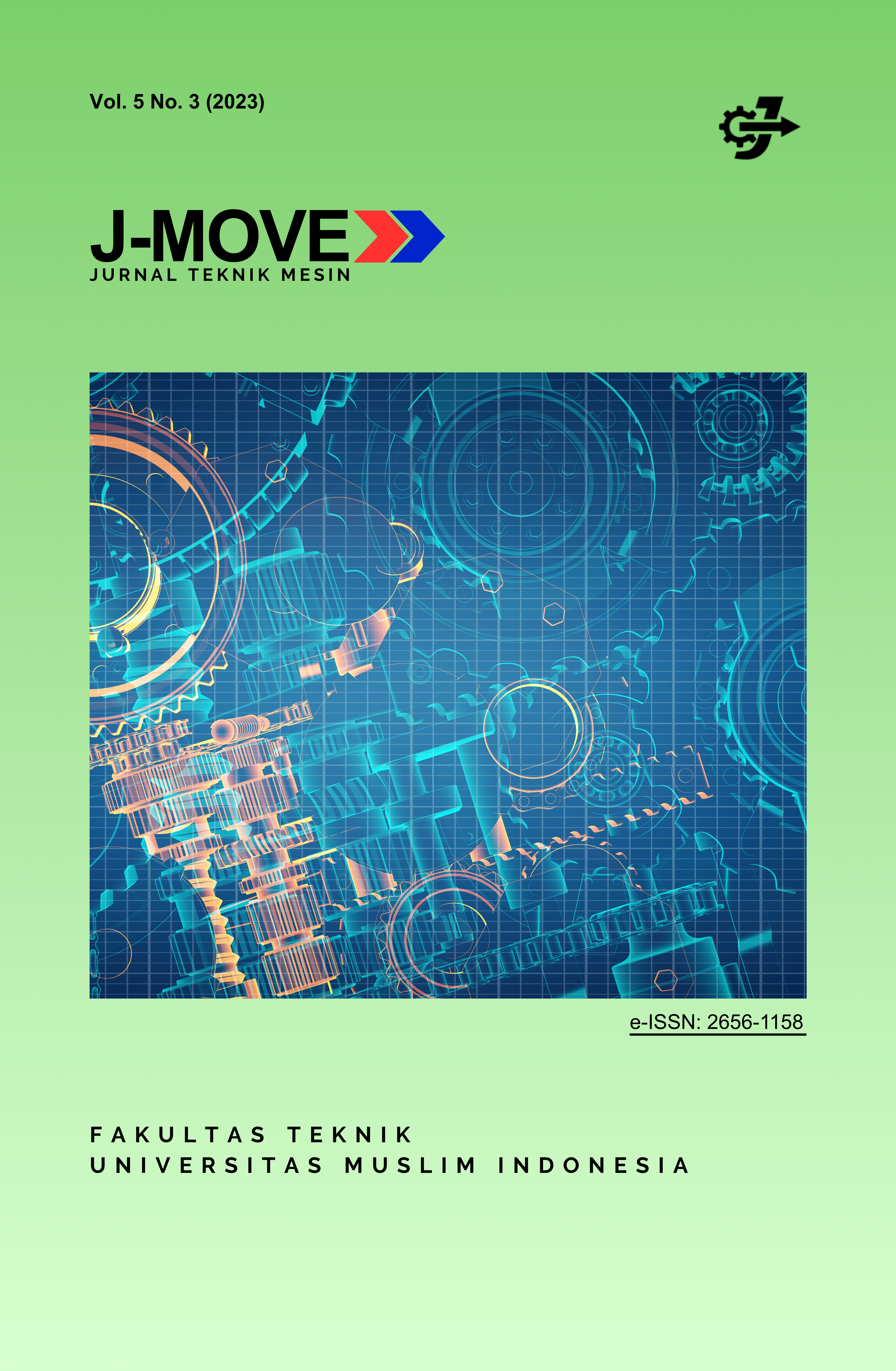Analysis of Mechanical Properties of Track Shoes on CAT 390D Excavator Unit at PT. Vale
Abstract
This study aims to determine the percentage of wear, impact strength, and hardness values of the Track Shoe of the CAT 390D Excavator. The track shoe is part of the undercarriage which, besides serving as the contact point with the ground, also functions as the base that enables crawler movement. It supports and transfers the load to the surface being traversed, whether hard or soft, and works together with the steering and braking system to move the excavator. Track shoes are installed on excavators for operations in rocky areas, while in sandy environments their wear rate tends to be higher.
This research focused on the CAT 390D excavator track shoe, carried out at PT Vale and the Materials Engineering Laboratory of Universitas Muslim Indonesia. The results showed that the wear percentage of the Caterpillar 390D grouser track shoe in January 2021, with operating hours of SMU 13,651 hours, was 7.7% on the left side and 6.9% on the right side. By April 2022, with operating hours of SMU 23,336 hours, the wear percentage increased to 43.6% on the left side and 45.1% on the right side.
The impact strength of the Caterpillar 390D track shoe was found to vary by section: the upper part produced an impact strength of 9982.23 J/cm², the middle part 7037.98 J/cm², and the lower part 2951.29 J/cm². The average hardness values were 57.7 N/mm² at the lower part, 63.6 N/mm² at the middle part, and 66.9 N/mm² at the upper part.
Downloads
Published
Issue
Section
License

This work is licensed under a Creative Commons Attribution-ShareAlike 4.0 International License.
All articles published in J-Move Journal (Journal of Mechanical Engineering Innovation and Development) are licensed under the terms of the Creative Commons Attribution-ShareAlike 4.0 International License (CC BY-SA 4.0).
- Copyright is retained by the authors.
- Articles may be used, copied, shared, and adapted by others for both commercial and non-commercial purposes, provided that:
- Proper attribution is given to the original authors and to the journal as the place of first publication.
- Any derivative works (adaptations, modifications, or developments) must be distributed under the same license (CC BY-SA 4.0).
By submitting their manuscript to this journal, authors agree that their work may be distributed and reused in accordance with this license.








